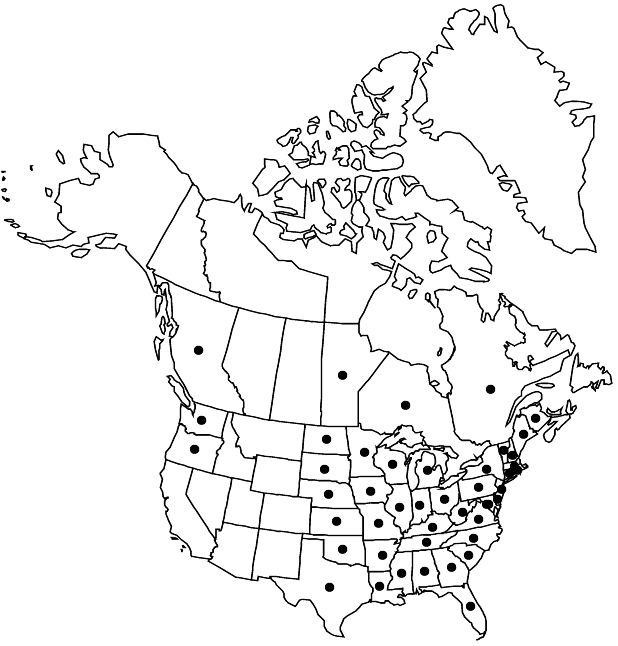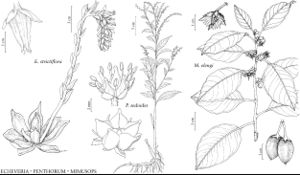Difference between revisions of "Penthorum sedoides"
Sp. Pl. 1: 432. 1753,.
imported>Volume Importer |
imported>Volume Importer |
||
| Line 52: | Line 52: | ||
|publication year= | |publication year= | ||
|special status=Illustrated;Endemic | |special status=Illustrated;Endemic | ||
| − | |source xml=https:// | + | |source xml=https://bitbucket.org/aafc-mbb/fna-data-curation/src/2e0870ddd59836b60bcf96646a41e87ea5a5943a/coarse_grained_fna_xml/V8/V8_480.xml |
|genus=Penthorum | |genus=Penthorum | ||
|species=Penthorum sedoides | |species=Penthorum sedoides | ||
Latest revision as of 22:44, 5 November 2020
Stems frequently pink or reddish, especially with age, 1–6(–8) dm, stipitate glands hyaline or reddish brown and often black- or purple-tipped. Leaves: petiole absent or 1–10 mm; blade 2–18(–24) × 0.5–4(–5.5) cm, glabrous or sparsely stipitate-glandular abaxially and adaxially, hairs black- or purple-tipped. Inflorescences secund, 2–7-branched, each branch (6–)10–25(–30)-flowered. Pedicels 0.5–3 mm. Flowers: hypanthium 0.5–1.5 × 1.5–3.5 mm; sepals persistent, erect or spreading, unequal, 0.8–2 × 0.4–1 mm, margins entire or serrulate with 1–4 gland-tipped teeth per side; filaments 1–2 mm; anthers 0.7–1 mm; pistil 3–4 mm; stigmas often purple with age. Seeds 0.5–0.7 × 0.2–0.3 mm, tubercles reddish or pinkish. 2n = 18.
Phenology: Flowering Jul–Oct.
Habitat: Wet soils, stream banks, fresh-water marshes, margins of beaver ponds, pools in floodplain forests, shores, ditches
Elevation: 0-700 m
Distribution

B.C., Man., N.B., Ont., Que., Ala., Ark., Conn., Del., D.C., Fla., Ga., Ill., Ind., Iowa, Kans., Ky., La., Maine, Md., Mass., Mich., Minn., Miss., Mo., Nebr., N.H., N.J., N.Y., N.C., N.Dak., Ohio, Okla., Oreg., Pa., R.I., S.C., S.Dak., Tenn., Tex., Vt., Va., Wash., W.Va., Wis.
Discussion
The seeds of Penthorum sedoides were used by the Meskwaki to make cough medicine, and the leaves were used by the Cherokee as a potherb (D. E. Moerman 1998). The species is introduced in southern British Columbia, Oregon, and Washington, where it grows in cranberry bogs.
Selected References
None.
